The Canon New FD 50mm f1.2, not to be confused with its more expensive and rare ‘L’ brother, is the more affordable of Canon’s two ultra-fast nFD 50mm lenses released in 1980. Unlike the big brother, it does not have the aspherical elements and commands a much lower price. Canon used a different optical formula for this lens — 7 elements in 6 groups, while all other Canon 50s were either 7/5 or 8/6. Perhaps the design, based on the 50mm f1.4, enabled Canon to make this lens compact and light, but no verifiable sources confirm that as a reason for the change.
This lens, with its optical design based on that of the renowned FD 50mm f/1.4, promises consistent and faithful color balance. High contrast and superb image definition are obtained even at its f/1.2 maximum aperture. Its fast speed ensures a bright viewfinder, a definite asset for precise and quick focusing. Canon’s achievement, however, is in an amazingly compact design.
Canon FDn Lens brochure
Being a latecomer 1980s lens, it has advanced spectra coatings, offers excellent stopped-down performance, and produces somewhat modern, clean-looking images. Therefore, it may not be for someone looking for ‘wild’ vintage photographs, but it works well for standard photography.
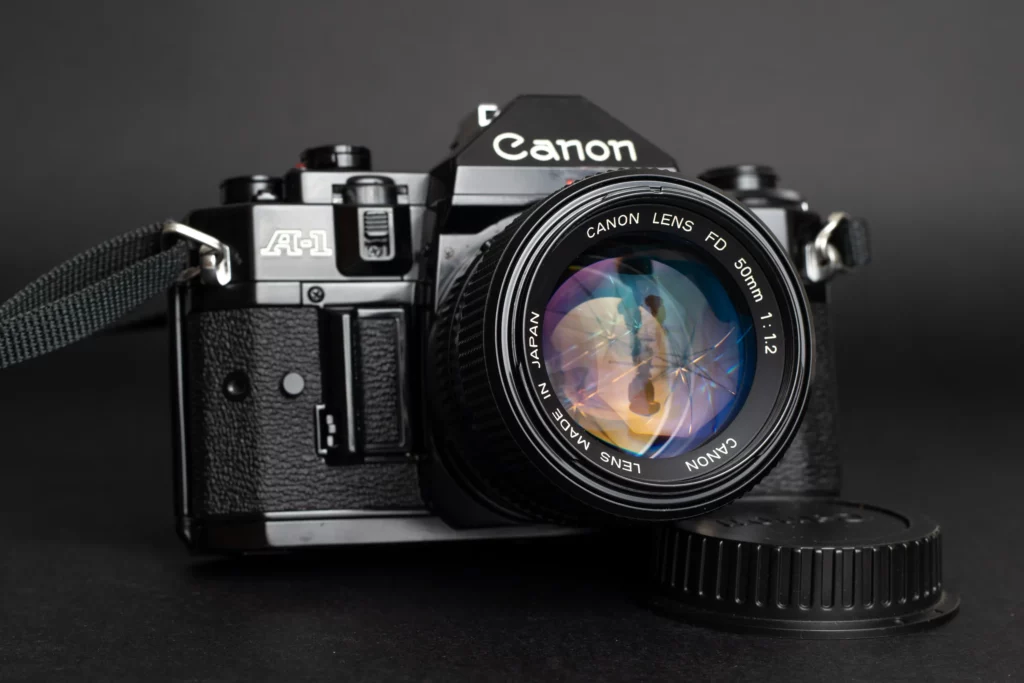
New FD or FDn
FDn, nFD, and New FD mean the same thing — a newer version of Canon’s FD mount. People (including me) use these terms interchangeably. Officially, it is still an FD mount, but the nFD lenses no longer use a breech mount and rotate onto the camera like a bayonet. They are the last iteration of manual focus lenses from Canon because nFD was replaced by a fully electric EF mount and then RF mounts.

Build quality
Like all similar Canon FD lenses, the Canon nFD 50mm f1.2 is solid — made of finely machined metal and glass. Finely made manual-focus lenses connect a person to photography through tactile feedback and pleasant interaction. The attention required to rotate the rings to set the correct aperture and attain focus results in better images. The focus ring is smooth and well-damped, making focusing easy, and the aperture ring feels good to use with precise clicks. I appreciate the New FD lenses for how they feel when used – this is half the fun of using vintage lenses – and Canon nFD 50mm f1.2 delivers.

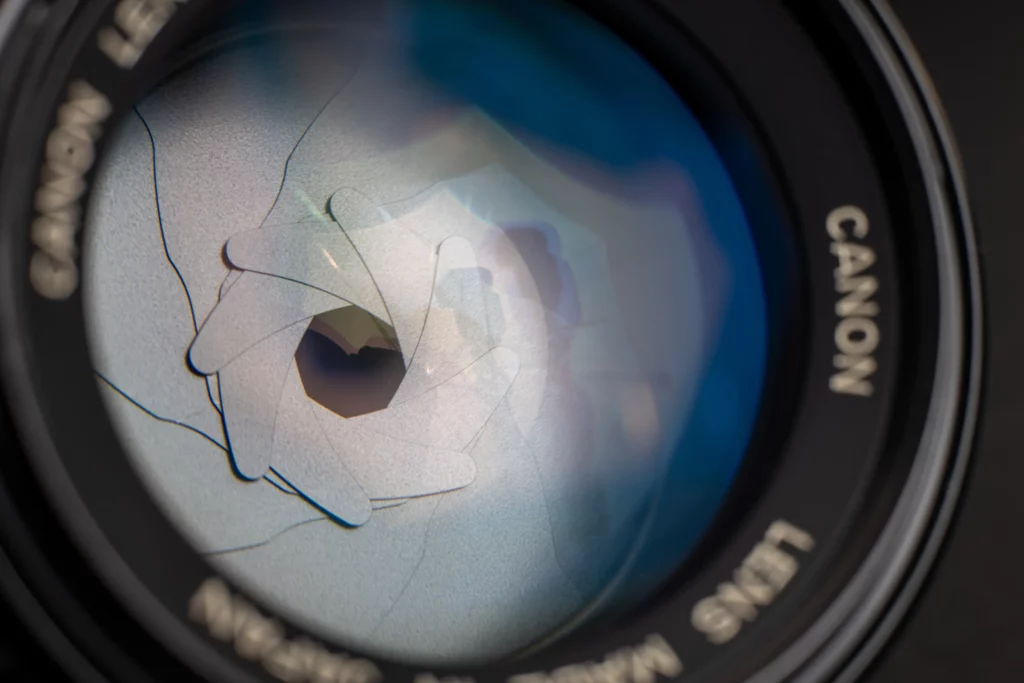
Image quality
When stopped down slightly, the Canon nFD 50mm f1.2 delivers lovely images. However, my wide-open f1.2 testing impressions were mediocre.
Don’t get me wrong: the pictures were sufficiently good, but compared to some other great performers, such as the Konica Hexanon 57mm f1.2, which is very capable even wide open, this Canon New nFD 50mm f1.2 feels slightly lacking. There is so much spherical aberration (showing up as softness of the image) at close-up range that nothing seems to be in focus. It gets better from a further distance but is still somewhat muddy.


Perhaps I got my hopes up too much. After all, this is Canon’s latest manual-focus 50mm f1.2 lens, and the auto-focus ones that followed were quite capable, even wide-open. Similarly, the aspherical ‘L’ version, released almost simultaneously, is also considered excellent. The nFD 50mm f1.2 offers a unique f1.2 experience at a more affordable price point, but it does not have the same level of sharpness as the ‘L’ version.
The Canon nFD 50mm f1.2 still performs well when stopped down, but the images start looking like they are from any other 50mm and do not have much of a “vintage” vibe. However, the photos are still pleasant-looking and perfectly usable.
Aperture testing
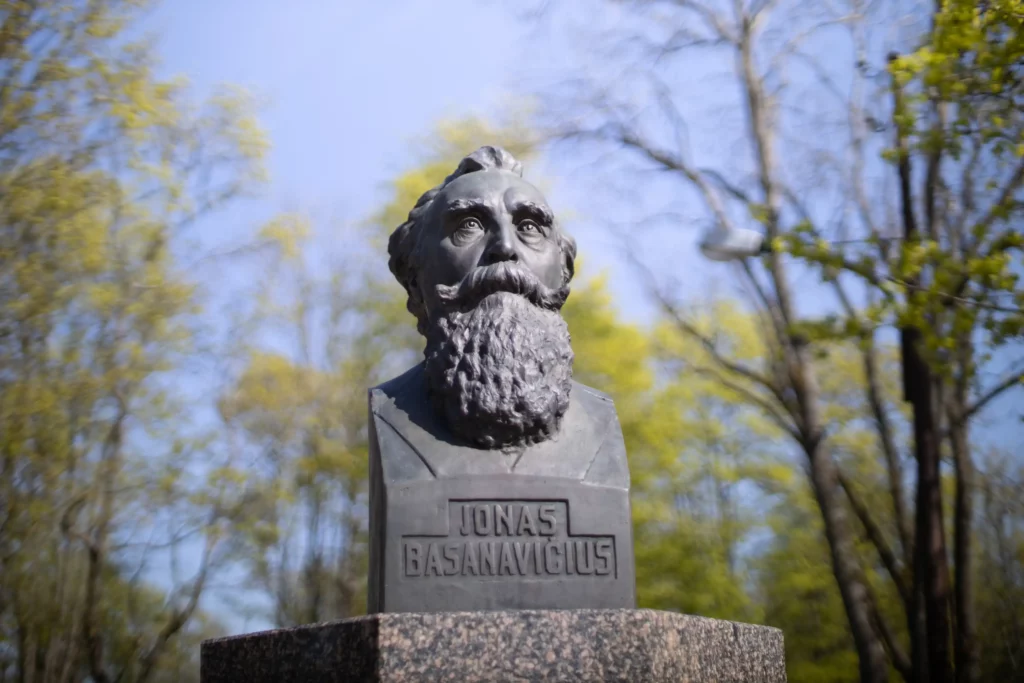


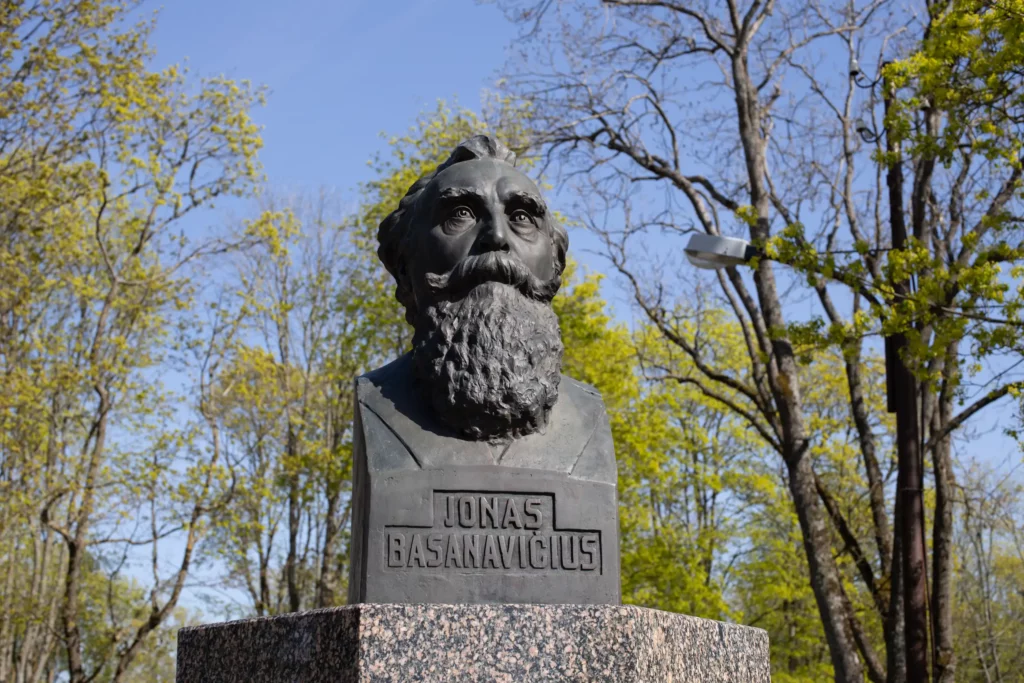
Adapting Canon nFD 50mm f1.2 to digital cameras
The Canon FD mount is one of the easiest to adapt. Due to its popularity and the abundance of lenses, the adapters are cheap and plentiful. I prefer the ones made by Haoge – they fit nicely and are compatible with FD and nFD lenses. I also have a Novoflex, which works perfectly for nFD but does not allow me to mount any FL lens properly (the ring does not rotate fully to lock the lens into position). Therefore, I would not recommend the Novoflex for Canon FL mount lenses. Besides that, Novoflex is a lovely, well-built, quality adaptor that works well for nFD.
Radioactivity
I have found no radioactive elements in the Canon nFD 50mm f1.2 glass. I did not expect to see radiation because it is a relatively late vintage lens. New glass formulas have already superseded the thoriated glass, offering similar optical properties without any harm to the environment of the factory employees, so my measurement confirmed my assumptions. To those who don’t know, vintage lenses were intentionally radioactive — they used glass made with thorium, which had beneficial optical properties. Companies stopped using thoriated glass when other formulations without thorium came into existence.
Specifications
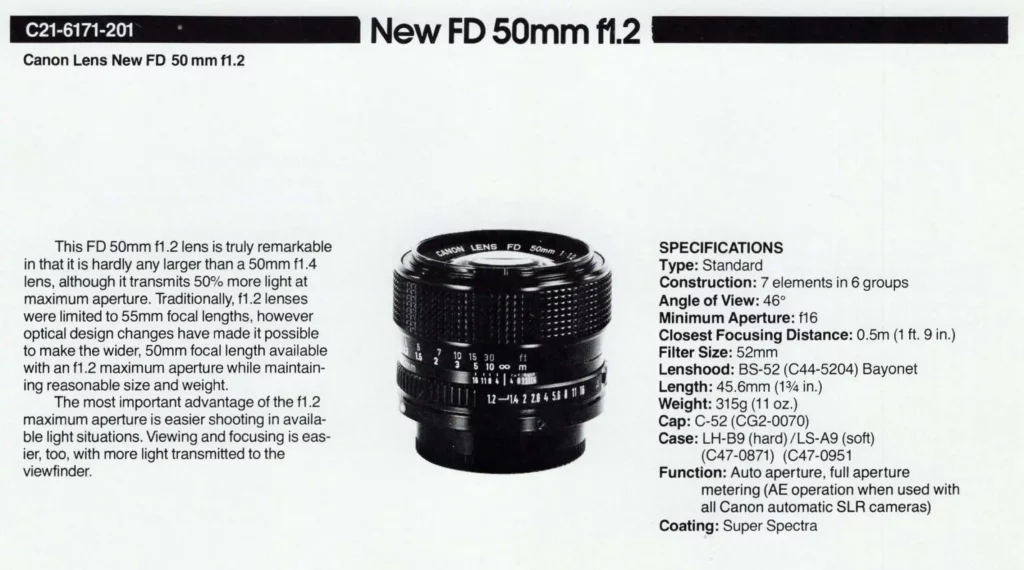
Pros
- Outstanding image quality stopped down
- Excellent value for money
Cons
- Soft at f1.2
- Images do not have a vintage look when stopped down
Price
The catalog price of 52,000 yen in 1980 means it was not a cheap lens, but it was still roughly half the price of the ‘L’ variant. Today, you can find it on eBay for approximately $150-300, making Canon nFD 50mm f1.2 one of the most affordable f1.2 lenses — a good lens for someone who wants to have more exotic glass without breaking the bank.
Conclusion
Canon nFD 50mm f1.2 is a capable, fast, standard lens. It does produce clean and sharp images. However, its most prominent unique selling point – the fast f1.2 aperture – rarely produces desirable photos. Canon FDn 50mm f1.2 becomes much better when stopped down, but it starts rendering like a modern lens. It’s a curse of being close to the ‘modern’ lenses on the technology timeline. I rate it as 4 out of 5, as it is still a fine lens but has its downsides.
What is your experience with the Canon nFD 50mm f1.2? Did I miss anything? Please leave a comment!
Sample Photographs taken with Canon nFD 50mm f1.2


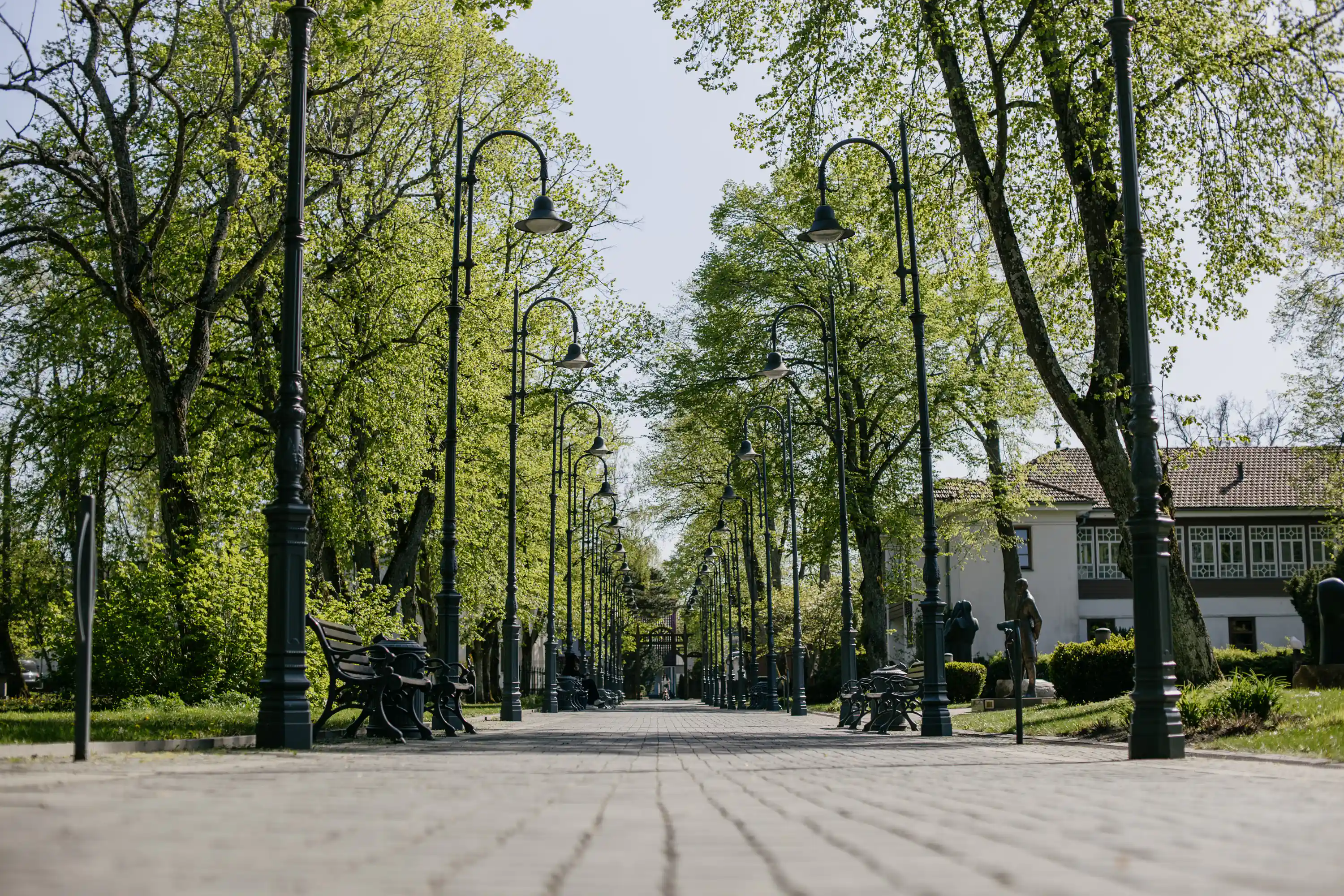

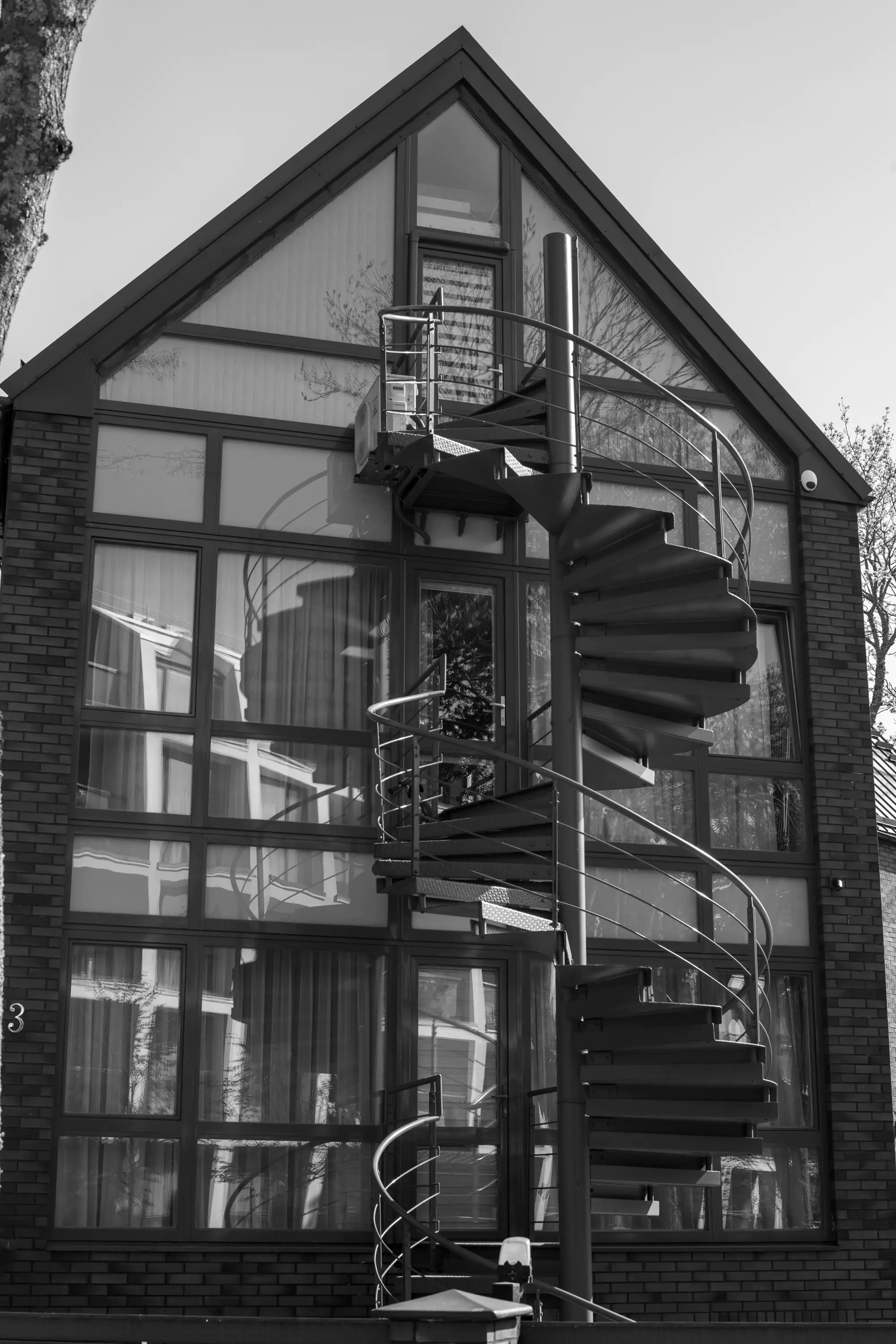





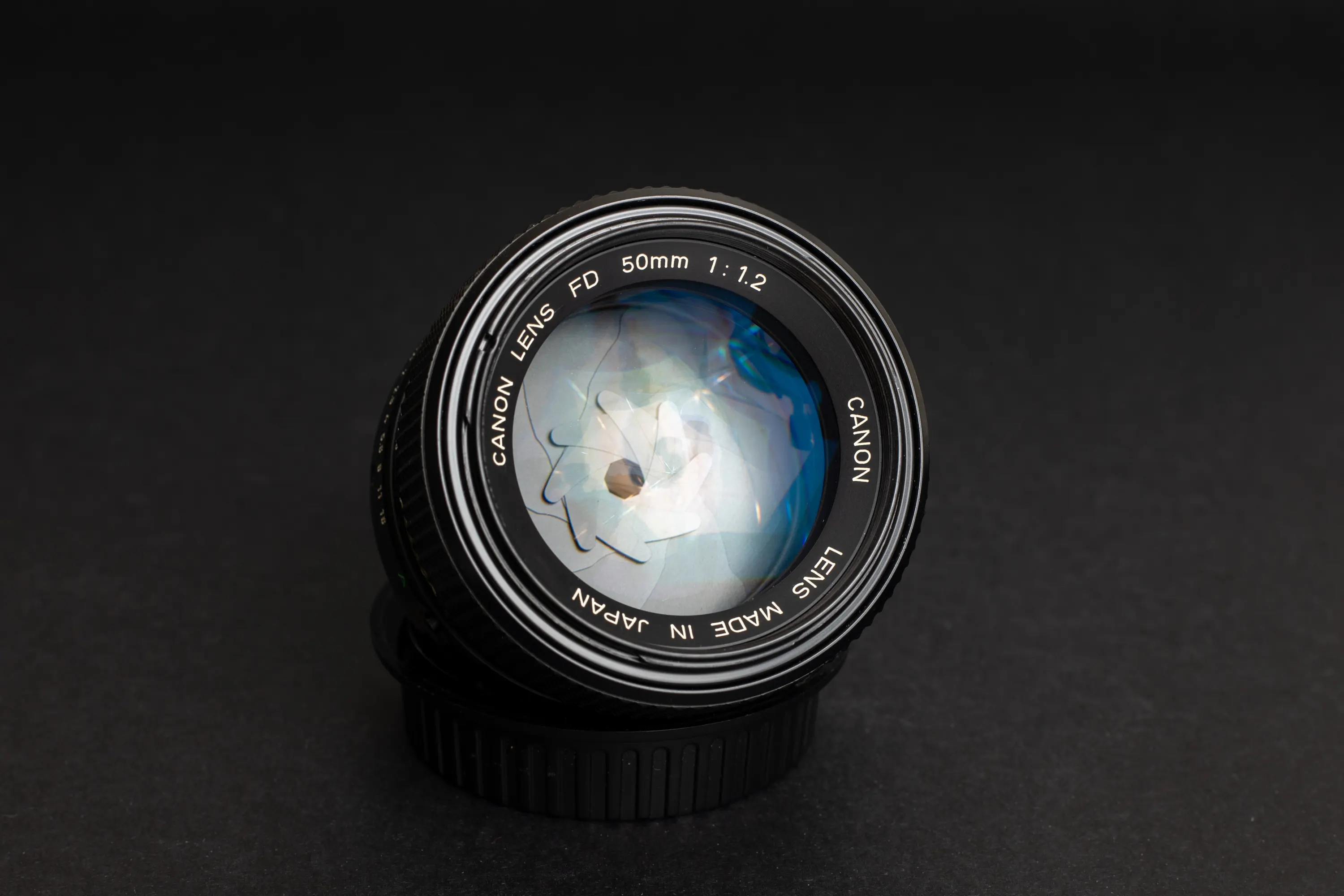
Leave a Reply